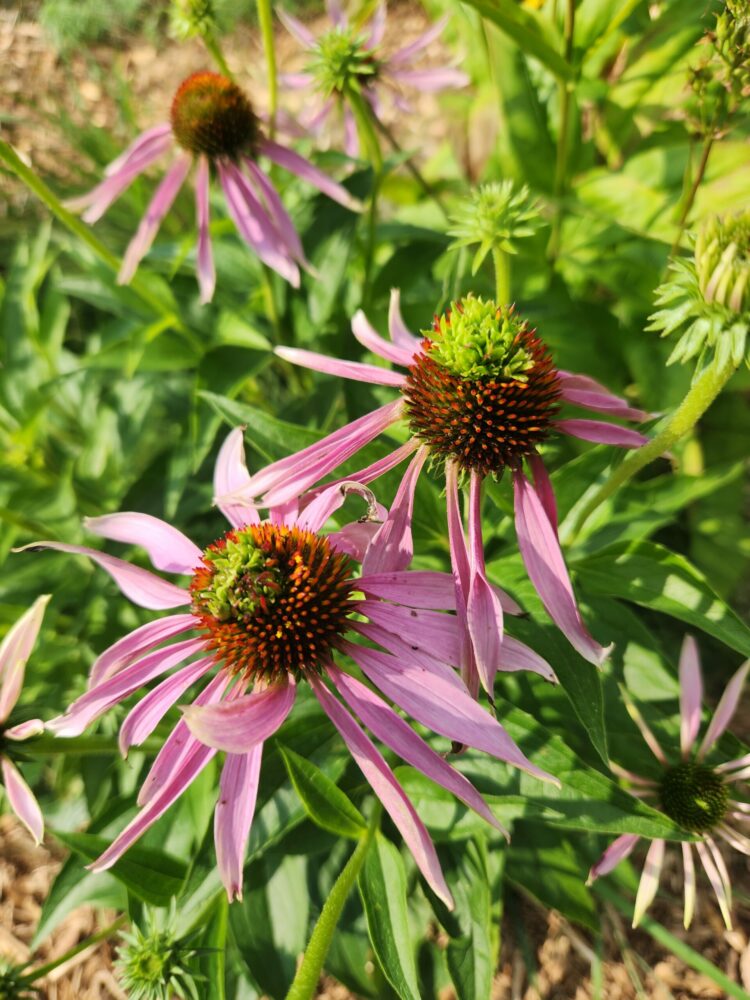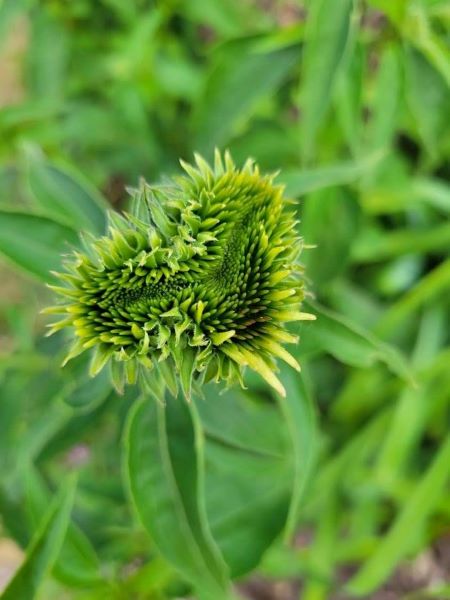
Aster Yellows
As with most disease and pest problems, accurate diagnosis is the important part of controlling a problem and doing so responsibly.
In this case, the image shows aster yellows disease on a purple coneflower. Aster yellows is a disease that is spread through insects that suck on the sap of plants. In most cases, it’s the aster leafhopper that is the carrier of the pathogen.
Aster yellows creates distorted flowers with green tufts, chlorosis of the leaves, stunted growth, and green flower petals. Different species may exhibit slightly different symptoms.
It can spread among plants in the Aster family as well as hundreds of other plant species outside of the Asteraceae family. Including lettuce, garlic, carrot, tomato, chrysanthrmum, petunia, zinnia, coreopsis, and perennial weeds like dandelions.
Unfortunately, if you see signs of aster yellows the entire plant needs to be disposed of to avoid spreading the disease. There is no treatment since it becomes a systemic issue and travels down into the roots. Burn your plant or bury it in your compost so it’s completely covered. The disease will not survive once the plant is dead.
You can plant something else as a replacement as it will not transfer through the root system.
Dry and hot summers slow the spread of the aster yellows disease, while cool and moist summers may accelerate transmission.
*Note for MN residents. It is illegal to dispose of plant material in your trash bin. Especially noxious weeds. Letting them die on site is the best way to mitigate further spread. Choose an area, above ground to pile weeds and pull weeds that germinate.
Read more on extension.umn.edu/plant-diseases/aster-yellows

